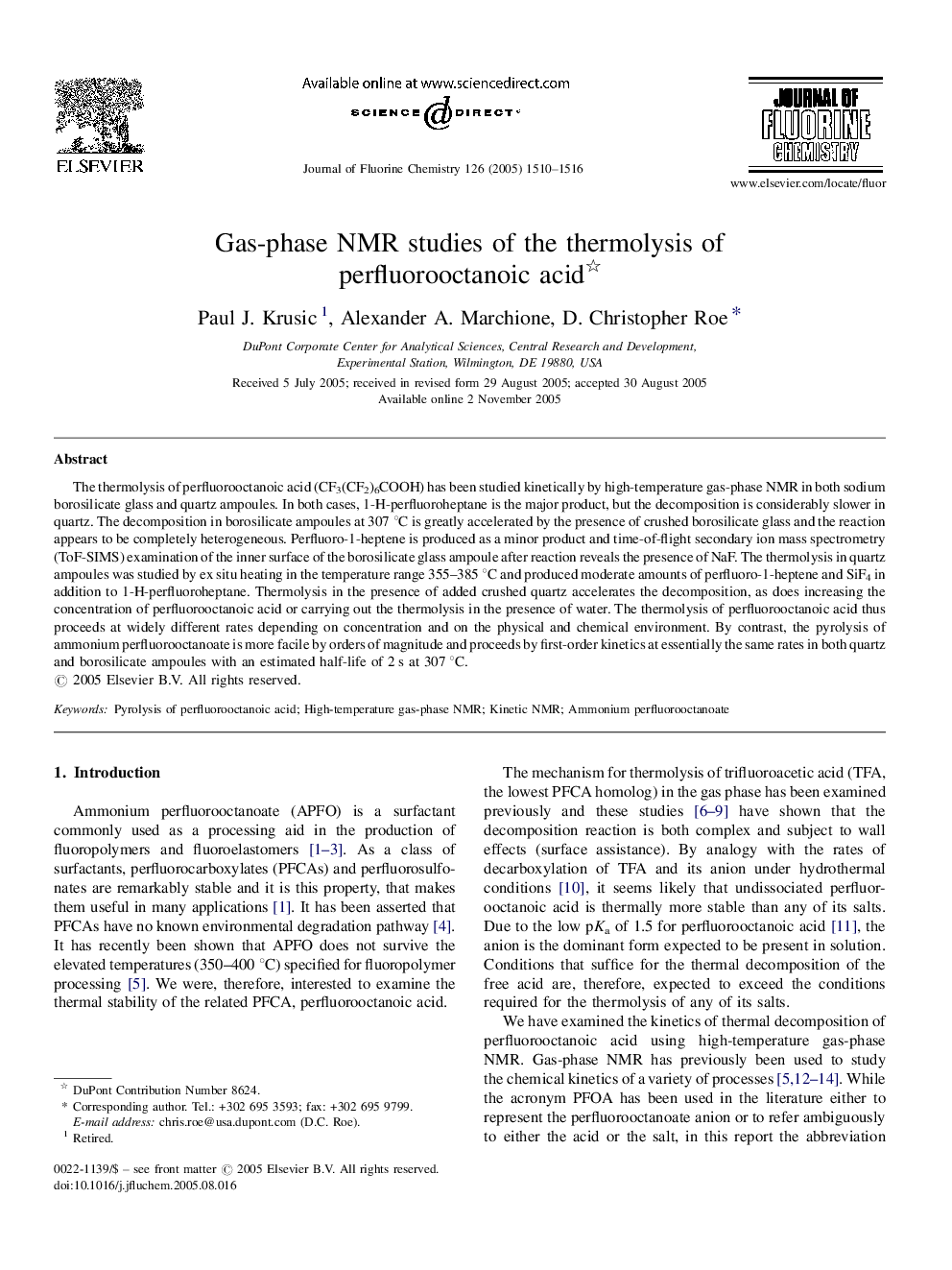| Article ID | Journal | Published Year | Pages | File Type |
|---|---|---|---|---|
| 9765804 | Journal of Fluorine Chemistry | 2005 | 7 Pages |
Abstract
The thermolysis of perfluorooctanoic acid (CF3(CF2)6COOH) has been studied kinetically by high-temperature gas-phase NMR in both sodium borosilicate glass and quartz ampoules. In both cases, 1-H-perfluoroheptane is the major product, but the decomposition is considerably slower in quartz. The decomposition in borosilicate ampoules at 307 °C is greatly accelerated by the presence of crushed borosilicate glass and the reaction appears to be completely heterogeneous. Perfluoro-1-heptene is produced as a minor product and time-of-flight secondary ion mass spectrometry (ToF-SIMS) examination of the inner surface of the borosilicate glass ampoule after reaction reveals the presence of NaF. The thermolysis in quartz ampoules was studied by ex situ heating in the temperature range 355-385 °C and produced moderate amounts of perfluoro-1-heptene and SiF4 in addition to 1-H-perfluoroheptane. Thermolysis in the presence of added crushed quartz accelerates the decomposition, as does increasing the concentration of perfluorooctanoic acid or carrying out the thermolysis in the presence of water. The thermolysis of perfluorooctanoic acid thus proceeds at widely different rates depending on concentration and on the physical and chemical environment. By contrast, the pyrolysis of ammonium perfluorooctanoate is more facile by orders of magnitude and proceeds by first-order kinetics at essentially the same rates in both quartz and borosilicate ampoules with an estimated half-life of 2 s at 307 °C.
Keywords
Related Topics
Physical Sciences and Engineering
Chemistry
Inorganic Chemistry
Authors
Paul J. Krusic, Alexander A. Marchione, D. Christopher Roe,
